SAUNA VENTS & WHAT YOU NEED TO KNOW
ABOUT SAUNA VENTILATION
Saunas have become increasingly popular over the years. They provide us with many health benefits, such as detoxification, recovery for sore muscles, reduced stress, increased metabolism, weight loss, and improved skin health. A sauna session can also help reduce muscle and joint pain. To get the most out of your sauna, you must ensure that the sauna is as efficient as possible.
Sauna ventilation is one of the most essential but often neglected parts of proper sauna design. Humidity can rise in a sauna, and the temperature is high on average. These conditions are favorable for disease-causing agents and bacteria to grow and spread. Poor sauna ventilation can cause health issues, mold growth, virus infection, and excessive humidity.
Proper ventilation is essential for any type of sauna, ensuring a safe and comfortable experience. Natural airflow circulation should be incorporated into the design of every sauna room. Sauna vents are a common feature, and they play a vital role in air circulation throughout the sauna. The airflow must consistently bring new oxygen into the sauna while ensuring that the heat is distributed evenly around the room.
This article will discuss everything you need to know about sauna ventilation, including the benefits and types of sauna ventilation systems. We also discuss tips for using the vents for proper sauna ventilation, and much more.
Types of Sauna Ventilation Systems
The following are the major types of sauna ventilation systems:
Passive Ventilation
Passive ventilation is the oldest and most common type of sauna ventilation, also referred to as natural ventilation. Passive ventilation systems provide air circulation through natural air currents and thermal buoyancy. This type of ventilation mainly entails using vents or leaving the sauna door slightly ajar to control and guide air circulation.
A passive ventilation system typically regulates air temperature, bringing fresh air into the sauna and pushing out the old stale air. If you have a balanced system where the intake is greater or equal to the exhaust ventilation, this system can work quite well.
A passive ventilation system is the way to go if operating on a lower budget. They often have a lower setup cost than an active ventilation system. They may also require less maintenance because it does not involve wires, solar panels, or circuits. The only thing you will want to do every year is to ensure nothing is blocking the vents so they can continue to perform efficiently.
However, it is important to note that this price difference reflects the system's efficiency. In addition, it is important to understand that passive ventilation works best when there is a significant difference in temperature between indoor air and outdoor air. Therefore, there are some situations where it will not be ideal to have passive ventilation.
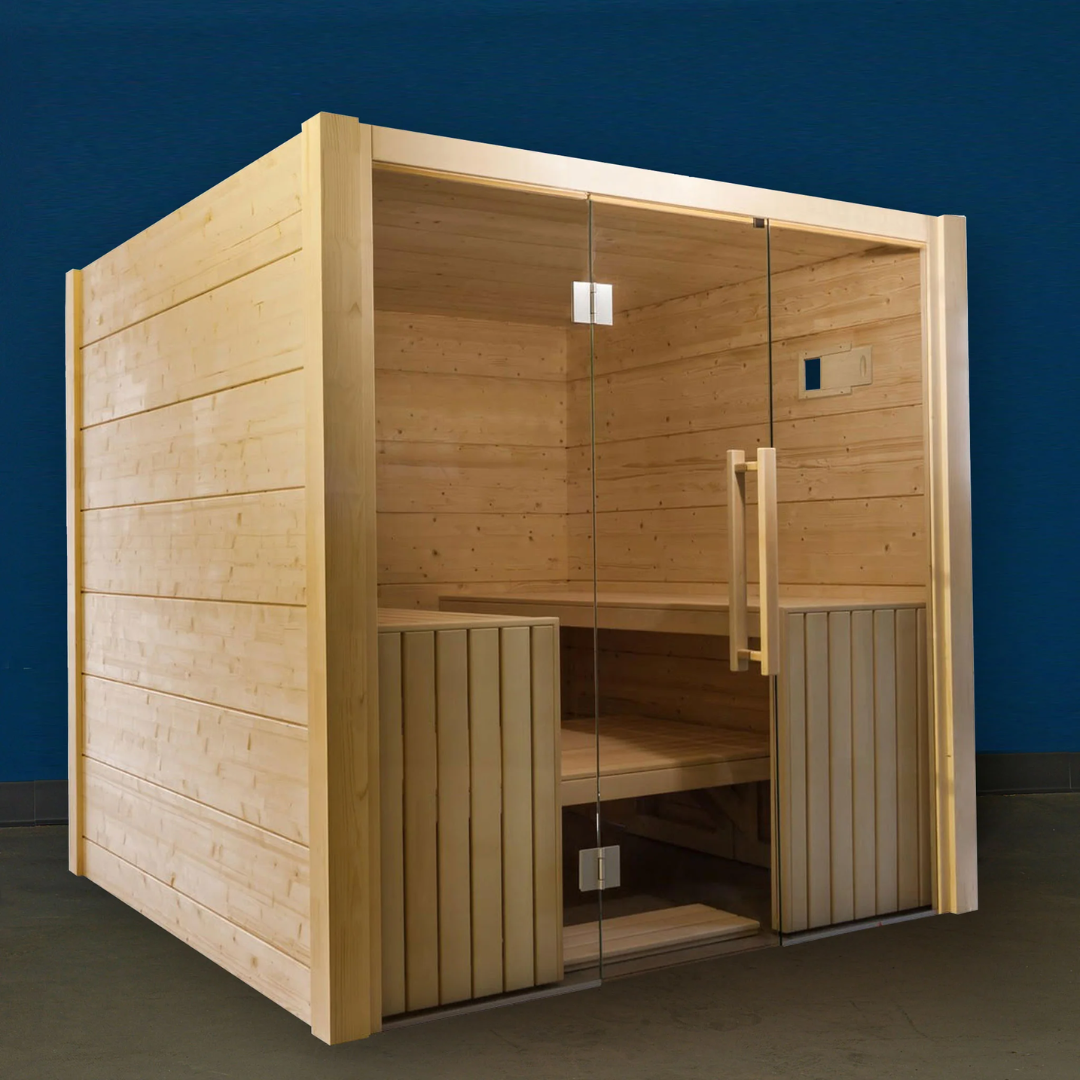
Active Ventilation
Active ventilation provides a more consistent ventilation system for your sauna. This system does not depend on natural airflow. Instead, it is a system that uses mechanical fans to provide air circulation in an indoor space. Active ventilation is often used to ventilate spaces prone to moisture and those that collect too much heat, such as garages and saunas.
With active ventilation, you will want to install a system, such as a fan or an air exchange system, to aid the airflow in the sauna space. These types of sauna vents will replace the air inside the sauna with fresh air from outside faster than passive ventilation because of the more consistent airflow.
One of the advantages of passive ventilation systems is that they are effective regardless of weather conditions. Passive ventilation does not work as effectively if there is little or no wind outside. That is not the case for active ventilation, as it uses an energy force to keep its motor going and does not need to depend on external forces to cool your sauna.
Active sauna ventilation is highly recommended if you have a unique sauna design because the system has more power. However, while active ventilation systems are excellent because of their efficiency, they come with high monthly operating cost because of their heavy reliance on electricity. If you want to keep your energy bill as low as possible, this sauna ventilation may not be the best system for you. Also, since active ventilation uses moving parts, you will want to do regular maintenance.
Tips for Using the Sauna Vents for Proper Ventilation
The following are a few tips on properly ventilating your sauna using the vents:
Know Your Sauna
It is always important to familiarize yourself with your sauna's ventilation system before using it. Most saunas come with two vents, usually two holes near the top of the front door with a piece of wood that spins to cover or open them.
One of the vents can be by the ceiling, designed for exhaustion, while the other vent is underneath the heater and is designed to pull in the fresh air. However, it is important to note that the sauna ventilation system may vary depending on the type of the sauna.
Start with the Sauna Vents Closed
If you use your sauna, you will want it to heat up as quickly and efficiently as possible. The heating time of a sauna depends on various factors, such as the size of the sauna, the power of the heater, insulation, and air circulation. You can also make your sauna heat up quicker and more efficiently by closing the vents when starting your sauna sessions.
You can leave the vents open as the heater is warming up to avoid triggering the high-limit sensor. There is no harm in closing them as you begin your session and opening them again if it gets stuffy. If you use a barrel sauna, keeping the corks in the drain stave will prevent cold air from entering through the bottom.
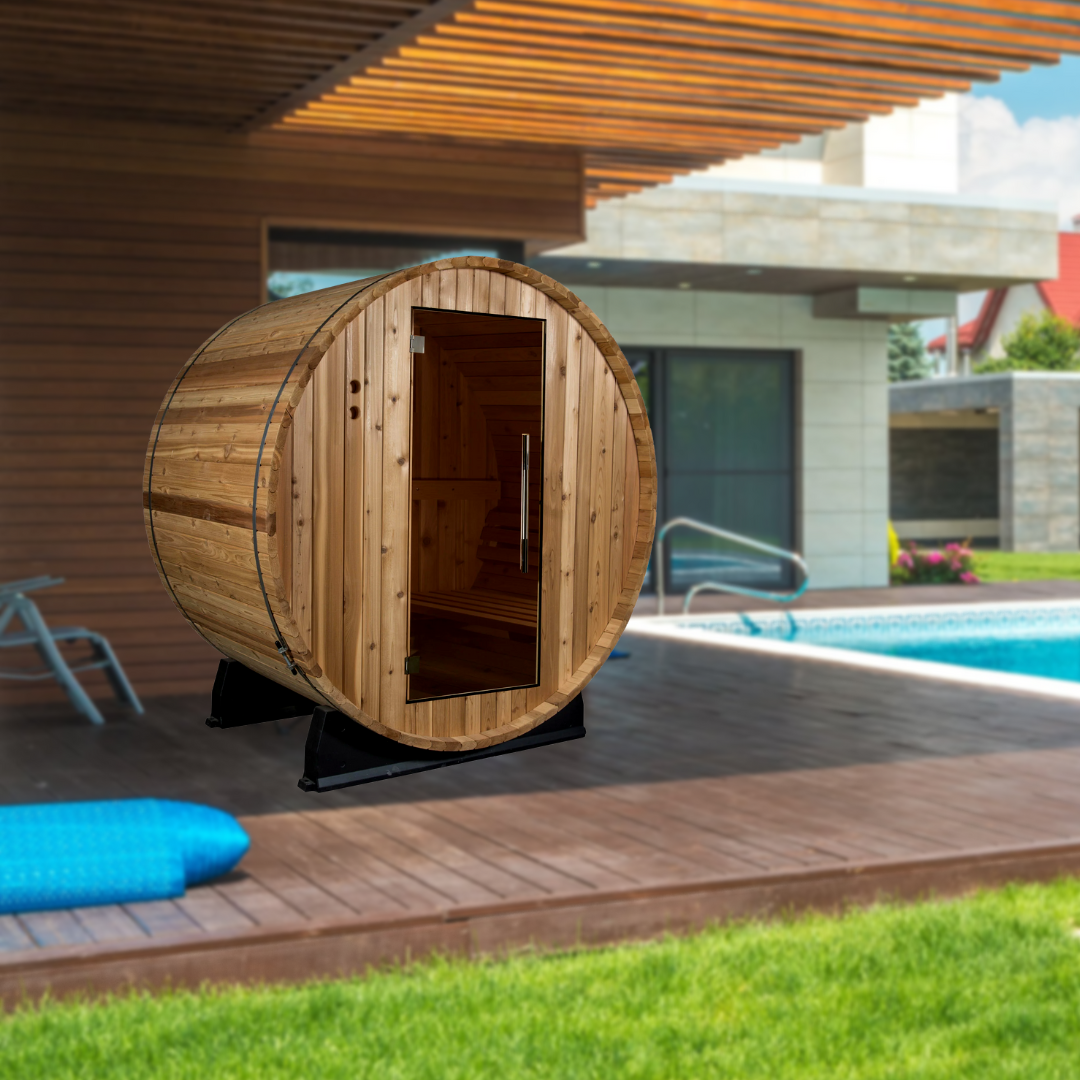
Open the Sauna Vents Gradually
During your sauna sessions, open the vents gradually to allow fresh air to circulate. Fresh air supply to the sauna room is necessary to ensure comfortable bathing and good combustion of the sauna heater.
Avoid Overventilating
While ventilating is essential for a comfortable sauna experience, overventilating can cause the sauna to cool down too quickly. You should avoid overventilating your sauna room as much as possible.
The Benefits of Sauna Ventilation
As mentioned, sauna ventilation is one of the most important elements in a sauna. Many sauna users consider it the second in importance after the sauna heater. Sauna ventilation helps improve air quality inside the sauna. According to many professional sauna contractors, the air in the sauna should change approximately seven to eight times per hour, meaning air must not only enter the sauna but must circulate.
Good sauna ventilation leads to more efficient heating and better temperature control. In a properly equipped sauna, the heat should be distributed more or less evenly. Heat rises naturally, so to improve your sauna temperature, you need to ensure air is always flowing by ensuring proper ventilation. In addition, proper ventilation can help prevent mold and mildew growth inside your sauna.
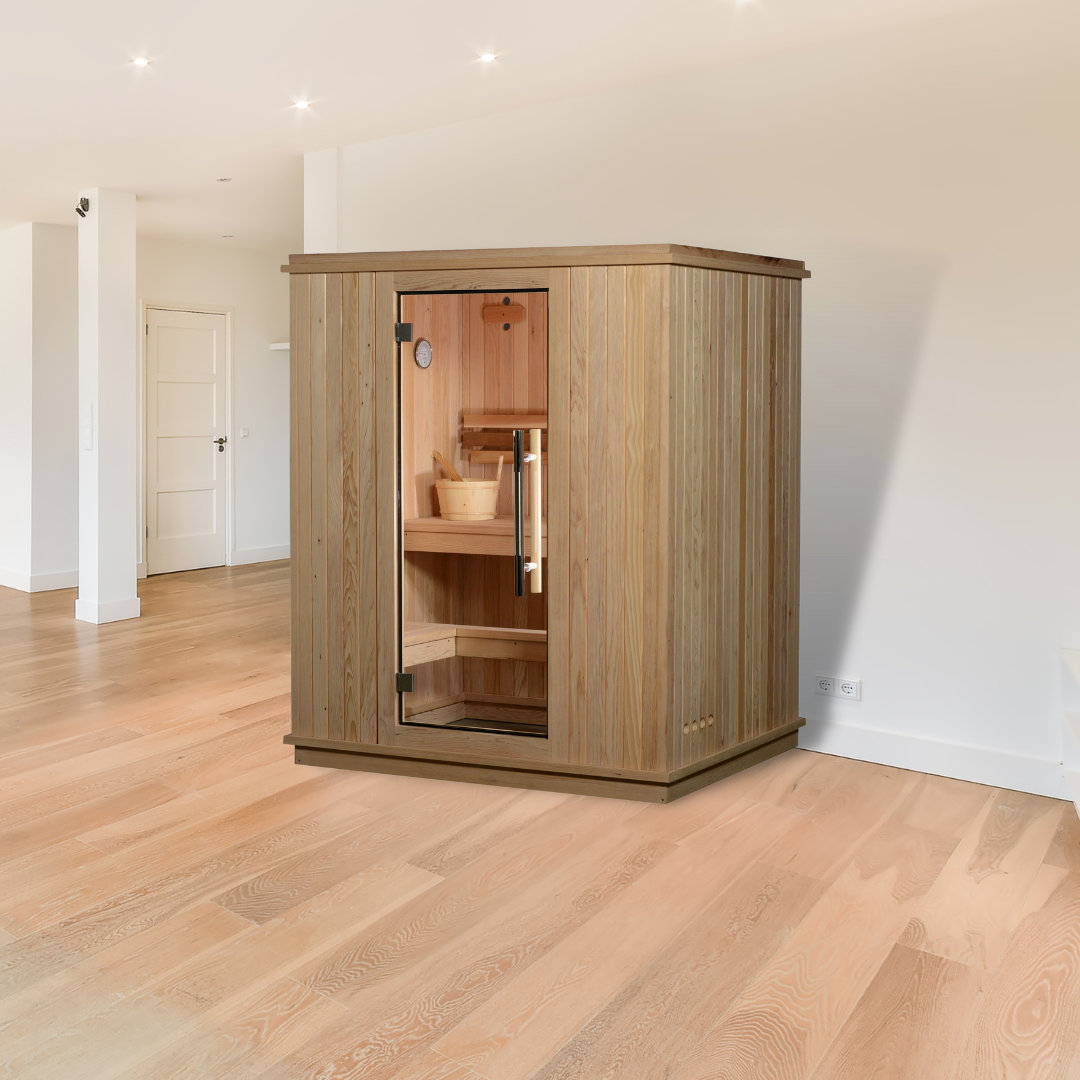
Additional Tips and Considerations About Sauna Vents
The temperature influences the oxygen and humidity content of the air in a sauna. Monitoring temperature and humidity levels to ensure proper ventilation is important. You can use the Almost Heaven Sauna Thermometer/ Hygrometer to measure the temperature and humidity levels.
Insufficient ventilation in the sauna room is frequently the cause of poor sauna experiences. Therefore, it is important to ensure the ventilation system is efficient. Also, it is important to ensure you stay safe inside your sauna. There are several safety considerations regarding sauna ventilation, such as using proper ventilation when using essential oils and other aromatic substances. You will want to monitor your body's response and take breaks as needed.
Conclusion
The secret to a good sauna is a well-planned and efficient ventilation system. Having a good sauna ventilation system is just as important as the capacity of the sauna heater. Proper ventilation is essential for a comfortable sauna session and the durability and longevity of your sauna.
If you want an at-home sauna, check out My Sauna World's collection of traditional saunas. Also, do not forget to contact us with any questions.
SIGN UP. SAVE BIG.
Subscribe to be the first to know about our special monthly sauna sales, sent right to your inbox.

About the Author
Adam Fromson
Adam Fromson, co-founder of My Sauna World, loves saunas and their transformative health benefits. With years of experience exploring sauna culture and its impact on health and wellness, Adam is passionate about helping others discover the life-changing benefits of saunas for themselves.
Let customers speak for us
from 384 reviews
Good communication, easy delivery, easy set up, easy operation, great value. Recommended!
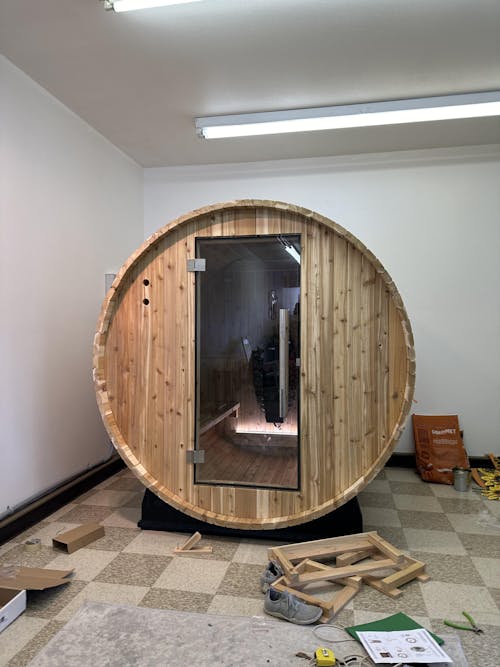
We ordered the 4 person barrel sauna and love it! We wanted a little extra space for the 2 of us/guests and it’s great. We could definitely fit 4 people in it if we needed. We use it every single day. It took about 10 weeks to get here because they build it specifically for the order. Putting the barrel together was fairly easy with 2 people. The electrical and the heater definitely required an electrician to install as we could have not done it alone.
We ordered the biggest heater (harvia spirit 8kw) and it heats up the sauna in about 15 mins inside our 40-50° garage. Overall this style of sauna is hotter and you sweat a lot faster than in an infrared sauna. I truly 10/10 recommend!
Pic is of us in the middle of building it.
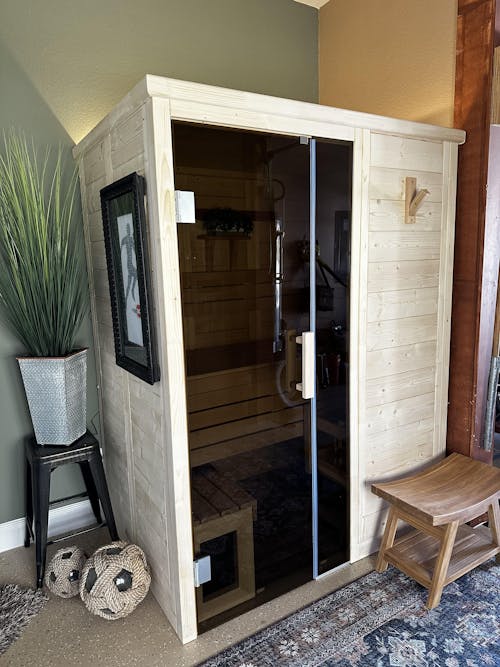
Took me about 6 hours over 2 evenings to assemble almost all by myself. Had a pro run a new circuit from my panel. Very well made and assembly was straightforward. Heater is well sized and reaches operating temperature in under 30 minutes.

Great sauna very easy to assemble
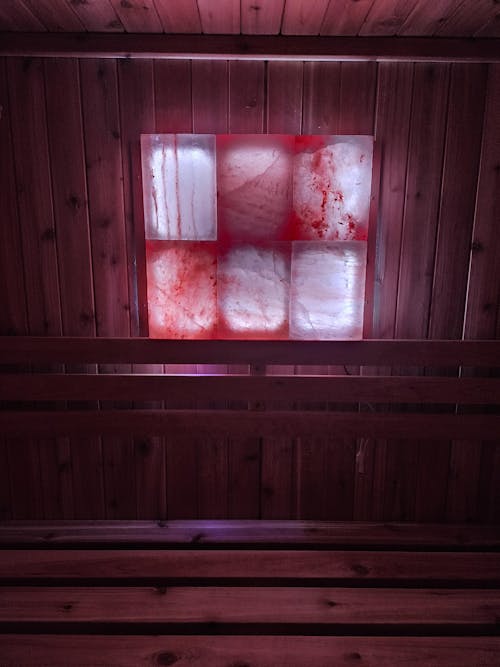
The salt panel was a great addition to our Madison Sauna. It has excellent grain which is accented by the amazing color lights that glow through the panel. Also when you hit the rocks with a splash of water you can feel the heat bounce off the panel. Great addition if you are considering this option.
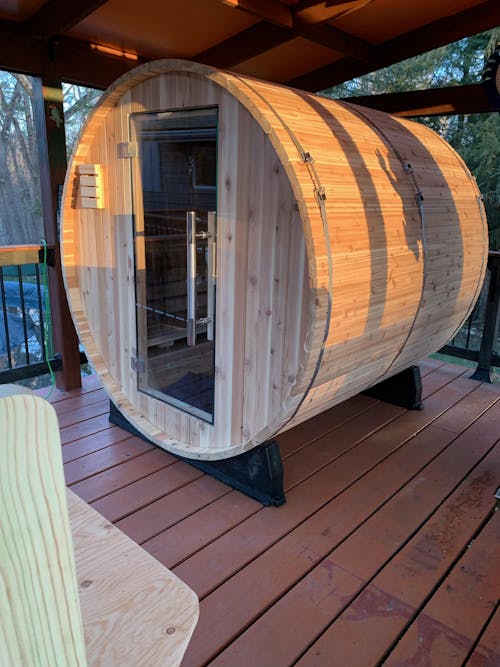
We can say enough about Sauna World there customer support is great! Our Pinnacle Sauna from Almost Heaven is epic.
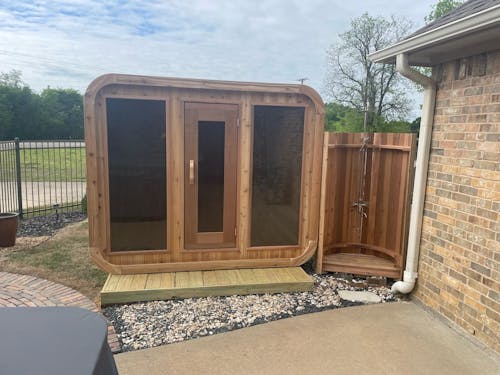
The finish and quality is outstanding and it was quick and easy to assemble.
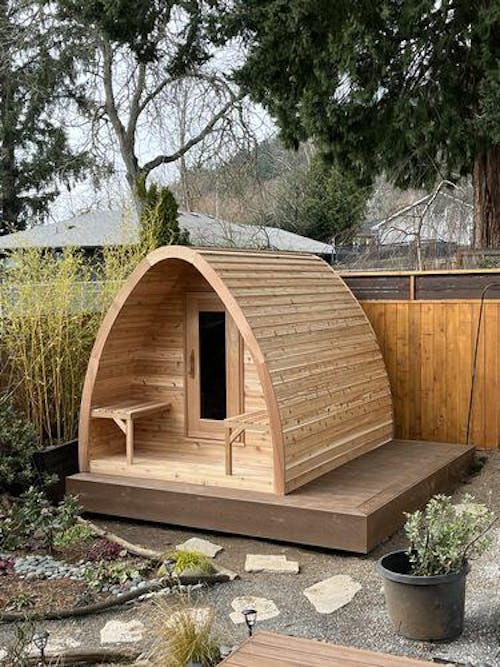
We are thrilled with our mini pod!! It came well shipped and our friend assembled it in 11 hours! Wow! We cannot wait to get healthy and sauna it up!
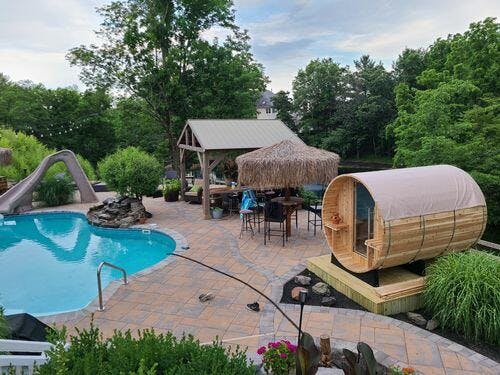
Beautiful sauna!!! Much easier than I expected to assemble, took a total of 4 hours. Can't wait to get warm by the pool on those cool evenings. Customer service was excellent..

Purchased a 2 person Almost Heaven barrel sauna and were delighted with the product. The order process was quick and easy, the sauna arrived on-time, installation was simple, following the provided instructions, and the sauna is extremely high quality. We’ve used it daily for over 2 weeks and quite frankly I don’t know how we lived without it. If I had it to do over again I wouldn’t change a thing... except maybe purchasing a 4 person model to easier share with friends!
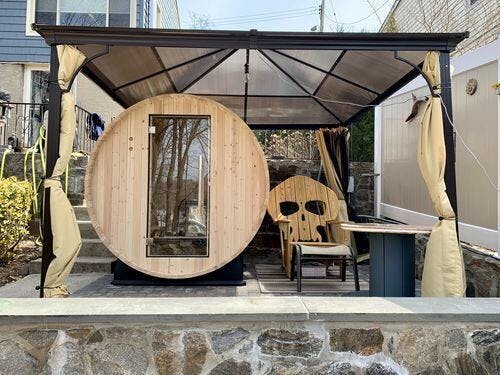
Great Customer Service and a breeze to put together.Excellent shipping and the Sauna is top notch, couldn’t be happier






























